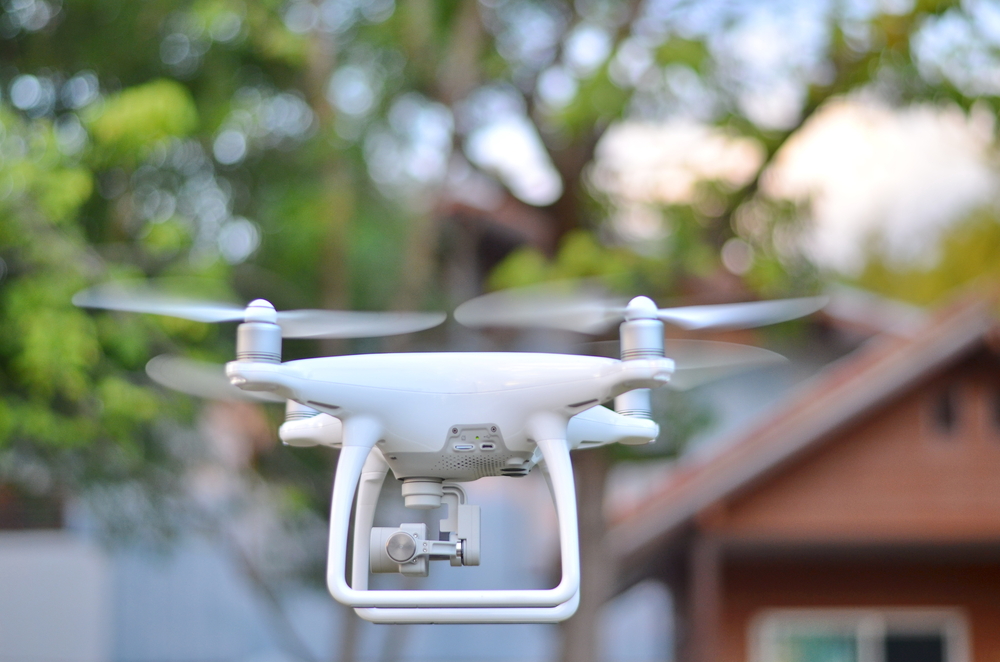By Erica Rascón on January 19, 2017 in Technology
The atmosphere surrounding the commercial use of drones is steeped in antici pation. It is like the seconds before a race starts: runners take their stance, the audience holds a collective breath, and the earth stands still.
pation. It is like the seconds before a race starts: runners take their stance, the audience holds a collective breath, and the earth stands still.
For years, though, there has been no burst of gunfire, no bolt towards the finish line–just anticipation. Technology advances but regulation hinders its application. The drone industry took off to a faint whistle around 2010 and has been meandering forward ever since.
Here is what we have so far and what we can expect before 2020.
The Hurdles We Have Overcome
Before summer 2016, only one law guided policy makers about landowners’ rights to airspace. It was written in 1946 as the result of United States v. Causby. At that time, a farmer sued the government of ruining his quality of life: day and night for months, fighter planes took off less than 80 feet above his house.
The court ruled in Causby’s favor. Landowners received the rights to airspace within the “immediate reaches above the land” that they owned. Aircraft operators could not interfere with “an intrusion so immediate and direct as to subtract from the owner’s full enjoyment of the property.”
With that ruling, the airspace up to 80 feet above private property gained protection from planes and other flying nuisances.
Existing Federal Aviation Administration (FAA) regulations forbids aircraft from operating less than 500 feet above any person, vehicle, or structure.
Fast forward to today. The FAA is scrambling to figure out what happens between 80-500 feet. This airspace is the hotly debated drone territory.
The Hurdles that Stand Ahead
The FAA has been slow to pull the trigger on definitive regulation for commercial drones. The few provisions made in the summer of 2016 prohibit large-scale drone usage. Most small-scale applications are still questionable.
Local governments and businesses have taken drone regulation into their own hands.
To date, nearly 20 states have passed laws on the use of drones. For example, in Northampton, Mass. landowners gained rights to the airspace up to 500 feet above their properties. St. Bonifaciuos, Minn. rejected drones altogether.
Some organizations have invented their own rules. The conglomerate owners of South by Southwest forbid the use of drones during its festival in 2016. PGA, Masters, and U.S. Open sporting events have passed similar provisions against drone usage (with few exceptions for vendors).
While the FAA doesn’t recognize such local rules, commercial drone operators can still face legal penalties for a lack of compliance.
Regardless of FAA and local regulations on drones, existing noise and nuisance laws may interfere with commercial drone operations over private property.
It is clear that commercial drone operators face a myriad of unclear yet legally binding regulations. The murky path makes it impossible to responsibly use drones on a commercial level.
Endless Possibilities
The demand for drone services and drone technology continues to advance. Drone deliveries are only the tip of the iceberg.
Harvard Business Review projects that the worldwide drone market will generate $7 billion by 2020. It cites big-data analytics as one of the biggest potential moneymakers.
The brokering of drone services is another potential cash cow. Commercial owners collaborate with brokers to determine how to effectively integrate drone services. Drone brokers may also connect corporations with fleets and their operators.
The possibilities expand beyond deliveries including but not limited to:
- Mapping and surveying
- Residential, commercial, and infrastructure inspection
- APP and software development for professional and recreational use
- Private investigation
- Aerial advertisements
Commercial operators must overcome notable hurdles before realizing their potential with drones. Without clear guidance from the FAA, commercial users are hamstrung by the diverse rulings of local governments and organizations.
Increased social and political pressure on the FAA may be the only thing that can prompt regulation and open the doors to commercial drone usage.


